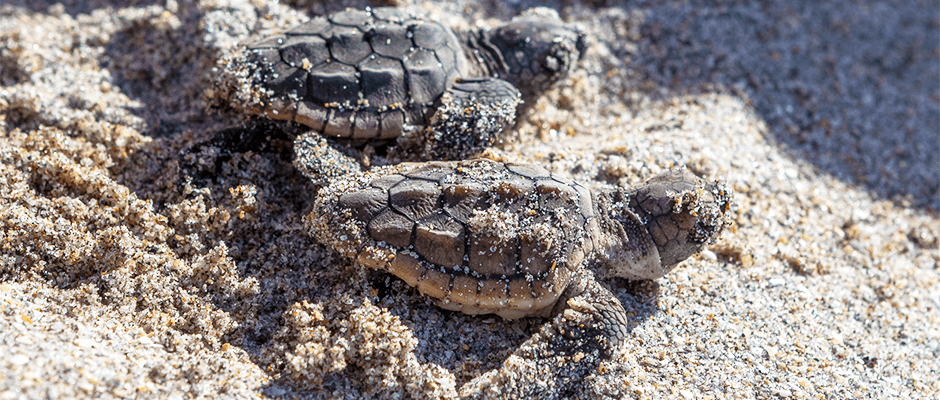Share this article
Higher paternity rates bring some good news for sea turtles
In just one nest, loggerhead sea turtle (Caretta caretta) nestlings tend to have multiple fathers, according to new research.
This is good news, researchers say, since loggerhead sex is dependent on temperature, with more females in higher temperatures — a fact that appears exacerbated by climate change. The research suggests that more males may be around than biologists had believed.
“Our lab mostly focuses on sex ratios of hatchlings, and what we found recently hasn’t been very good news,” said Jacob Lasala, a PhD candidate at Florida Atlantic University and the lead author of the study published in PLOS One.
That’s because warm temperatures in Florida have been producing mostly female hatchlings for years. But the lab’s latest research suggested that there are multiple adult males for each female in the wild, and they’re fathering those nests.
From 2013 to 2015, Lasala and his colleagues sampled 51 sea turtle nests in Sanibel Island on Florida’s west coast, which turned out to be about a third of the nesting turtles in the area.
They then determined the paternity of the hatchlings. Female sea turtles can store sperm for more than three months after mating events and can have multiple partners that fertilize their eggs.
They found that 70 percent of the nests had hatchlings with different fathers, and no single father’s DNA appeared in more than one nest. The average nest had two or three fathers, Lasala said, with a maximum of seven fathers. “This means either there were more males out there than we expected, or their behavior is different than was hypothesized,” he said.
Lasala said the results support both ideas. The results suggest that females may be mating on their way to their nesting site. When females reach Sanibel they stay in the area for several months and nest. But, “the really cool part is there are more males than we thought,” he said. With this paternity, information, Lasala and his colleagues extrapolated that at least 126 distinct males are represented from 2013 to 2015.
While this is good news for the loggerheads turtles, every species of sea turtle is threatened in some way, Lasala said, and the number of male hatchlings continues to dwindle.
Header Image: Two loggerhead sea turtle nestlings sit in the sand on Sanibel Island. Researchers found multiple paternity in loggerhead sea turtle nests. ©Jay Paredes








